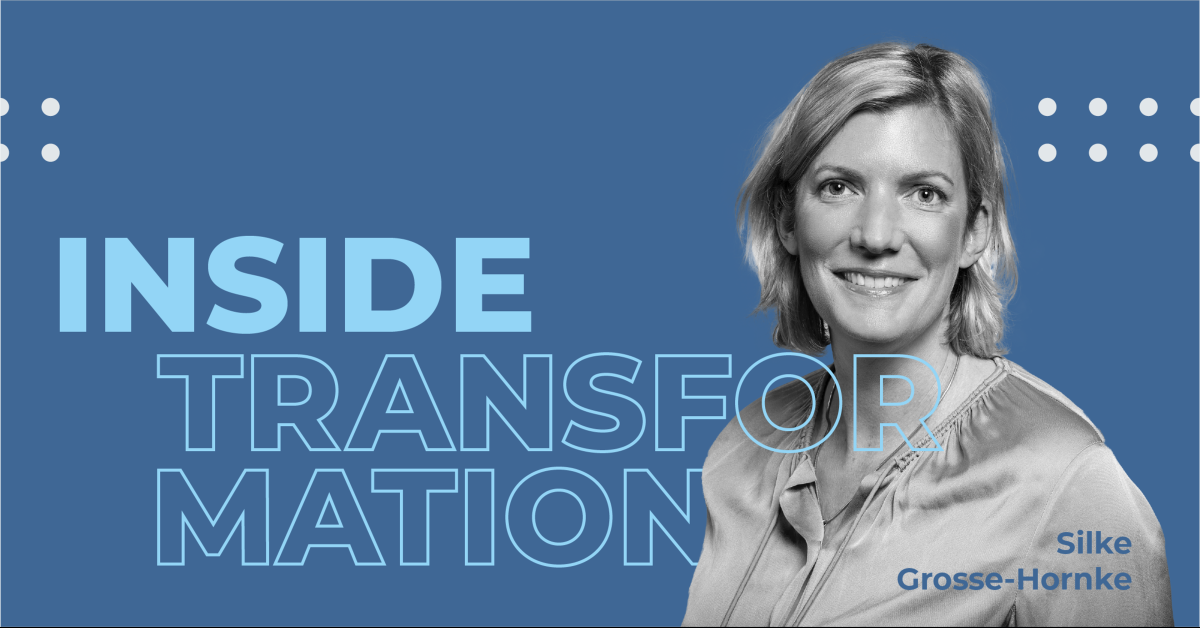
Leading in times of crisis: How healthy optimism works
Crises are as much a part of business as stormy weather at sea. But what if the storm lasts longer? 3 impulses for strong leadership in a crisis.

Companies are under pressure – from acute crises as well as from major transformations. One project follows the other. However, people like change as little as ever. Do employees need a breather?
By Silke Grosse-Hornke
Has your company already redesigned its offices to make them new work ready? Are you on your way to breaking down hierarchies and strengthening failure culture? What about sustainability, agility, hybrid leadership …? Companies cannot escape these trends – or, to put it positively, those who lead the way will gain a competitive advantage.
Transformational pressure is immense. On the one hand, companies have to navigate through the main currents: Digitalization, ecological transformation and demographic change are on their agenda. On top of that, global crises must be tackled. After two years of pandemic, companies are not finding themselves in the so-called new normal, but in an energy and supply crisis, whose social and economic disruptions can hardly be foreseen at the moment. Organizations have to deal with many strategic transformations as well as acute changes at the same time.
These days, executives will hardly be surprised to hear from their teams: “It’s all too much right now!” We come across this phenomenon quite frequently in our projects, and not only under the currently tightened conditions. The perceived overload has a lot to do with how we fundamentally react to change as human beings. Enjoyment of change is a very individual thing. Some employees like variety and see change as an opportunity, others avoid it wherever possible, and there are many people in between whose enthusiasm for new things is very limited. Companies can assume that most of their employees are just moderately enthusiastic about transformation.
The general unwillingness to change can be very well understood from a psychological point of view. The so-called Big Five model, which describes personalities on the basis of five fundamental characteristics, provides helpful insights. One of these characteristics is openness. People with high openness scores are inventive and imaginative; they love variety and new ideas. To a large extent, it is genetically determined how openminded we are. The majority of us are middle-of-the-road; only a few have an innate enjoyment of new experiences. And the older we get, the more we cling to the status quo.
Why is that? Our brain likes to save energy and has perfected an ingenious trick: recurring processes eventually become automatic. Such routines conserve our mental energy, and that’s why we have a natural aversion to anything which has not yet been standardized by our brain. Laboratory experiments even show that we are rewarded with happiness when we stay within our neurobiological comfort zone. Any disruption of our routines can put us on withdrawal. We therefore perceive change as a loss of control and well-being.
It would be practical for companies if we could train our openness to new things. Unfortunately, when we are confronted with frequent change that does not mean that we will be able to cope better with it. Image that you’ve just started running regularly – this won’t make it easier for you to give up sweets at the same time, would it? Changing individual behavior patterns is rather strenuous for most of us. The good news is that organizations do have the ability to train transformation – by recognizing the risk of being overwhelmed and developing countermeasures that will make it easier to implement continuous changes. Not all employees have to be fully committed to the task at hand. But we make it as easy as possible for them to follow the path.
To avoid overload, scaling back transformation cannot be the first answer. Before that, we adjust other measures for our customers, especially these:
Get rid of side shoots: Why have a dedicated project on failure culture when the topic is already covered by a leadership program? By coordinating program and project management, you can gain an optimal overview, identify interfaces and avoid redundancies.
Set the stage for role models: Projects have to communicate their benefits and challenges in the most credible way. Especially in tough situations when colleagues wonder why they are doing all this. Change leaders from the operational level are often more convincing than members of top management.
Enjoy the silence: To keep their stakeholders informed, projects use internal communication channels and their own campaigns. However, they should avoid an information overkill at all costs. Not every topic requires a weekly newsletter, a C-level video and a special roadshow.
Value before mindset: What do employees need to change their behavior? Tangible offers and process improvements prove to be more effective than managerial appeals. A digital workflow, e.g., can perform miracles in speeding up internal coordination. And if you provide interesting online training, you can also promote the digital mindset.
Conclusion: When there are signs that “everything is too much”, this does not have to be a stop signal for transformation. Rather, it is an urgent call to reflect on your project portfolio and the measures associated with it. As described above, there are many ways to relieve the perceived pressure. Even if everything seems equally important and it is really difficult to prioritize, one key to success is focus.

Crises are as much a part of business as stormy weather at sea. But what if the storm lasts longer? 3 impulses for strong leadership in a crisis.

He conveyed confidence in a desperate situation: British polar explorer Ernest Shackleton and his team survived a two-year battle for survival in the Southern Ocean. What can leaders learn from him in times of crisis?

Getting an IT project across hundreds of organizational units to the finish line? Our colleague Mathis takes a sporty approach. In our interview, he tells us what excites him about project management as a consultant and why he goes to the boxing ring to compensate.
2021 Grosse-Hornke Private Consult